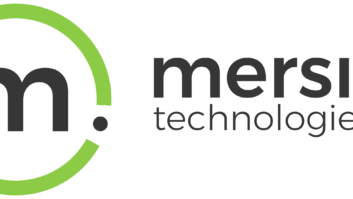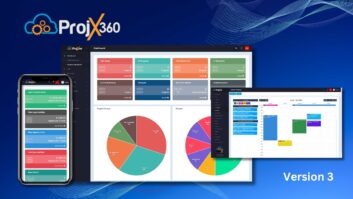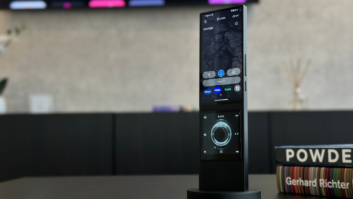New
York – Sprint committed to an aggressive 4G LTE rollout over its own 1900MHz
spectrum to eventually replace the 2.5GHz 4G mobile WiMAX service that it
wholesales from Clearwire, the company announced here at an investor’s
conference.
Sprint
will begin to turn on LTE service in mid-2012 and, by the end of 2012, will offer
4G service through its LTE network and Clearwire’s WiMAX network in markets
serving a combined 176 million people.
By
the end of 2013, Sprint will offer 4G LTE service to 250 million people while continuing
to provide Clearwire’s WiMAX service to customers in markets serving 120
million people.
Spritn
is making the switch to LTE overs its own spectrum to deliver faster data
speeds than WiMAX, benefit from LTE’s greater global economies of scale, and expand
4G coverage throughout its 3G footprint. The expansion of Clearwire’s WiMAX
network has been hampered by the company’s cash constraints and porift losses.
LTE
service will initially be launched over 1.9GHz spectrum that Sprint currently
owns but hasn’t used. After that, Sprint will “re-harvest” some of its other
1.9GHz spectrum for LTE use.
Executives
cautioned that Sprint can support 4G growth on its own spectrum only through
2014, when it hopes to get another year’s worth of capacity through an agreement
to re-sell LightSquared’s 1.6GHz LTE service.
Sprint
will get access to the 1.6GHz spectrum, however, only if LightSquared convinces
the FCC that its proposals will be effective in eliminating interference with
GPS devices. If LightSquared can’t get approval, Sprint can look at other
sources of spectrum for LTE, including Clearwire, which also plans to convert
to from WiMAX to LTE at some point in the future, executives said.
Although
Clearwire is losing large sums of money, Sprint CEO Dan Hesse said Sprint would
be able to continue supporting WiMAX users because no wireless bankruptcy has
ever led to service disruptions.
As
for LTE-equipped devices, Sprint will launch its first 1900MHz LTE devices in
mid-2012 to coincide with the LTE network turn-on. Sprint will continue to sell
WiMAX devices only through the end of 2012 but will support them for some time
after that.
A
total of 15 LTE devices, ranging from handsets to tablets and data cards, will
be available in 2012, including models from Motorola and HTC. The only
combination CDMA/WiMAX/LTE devices that the company will launch will be mobile
hot spots.
LTE
devices won’t be costlier for Sprint to buy compared to WiMAX devices because
in 2012, LTE chipset costs will come down in cost to equal WiMAX chipset costs
and will go below WiMAX chipset costs after that, the company said.
In
other device plans, Sprint said that pending FCC approval, it plans to deploy 3G
CDMA service in the 800MHz spectrum currently used by its 2G iDEN-technology
network. As planned, the carrier has been migrating customers off the iDEN
network in the expectation that it will turn off iDEN service in mid-2013.
This
year, the company said added iDEN-band 800MHz CDMA technology to select handsets
to get ready for launching 800MHz CDMA voice service. All handsets launched in
2012 will offer 800MHz voice, the company said.
Also
in 2012, the carrier said it will offer devices that uses a more advanced form
of 3G CDMA called 1x Advanced.
The
migration to LTE and the iDEN phase-out is part of the company’s Network Vision
plan to consolidate its separate iDEN and 3G CDMA networks to reduce the number
of cell sites to about 40,000 from more than 60,000 to reduce energy,
maintenance and other costs. The plan also calls for the installation of
multimode base-station technology that enables each base station to support
iDEN, 3G CDMA and 4G LTE technology while also being able to host
LightSquared’s 1.6GHz LTE technology should the FCC give final approval to
LightSquared’s plans to offer terrestrial service in the 1.6GHz satellite band.
The new network could also host other technologies and bands as well.
The
Network Vision rollout will take place at an accelerated two to three years instead
of the original five years, the company announced.
In
itself, Sprint’s network rebuild will improve 3G signal strength, data speeds
and in-building performance, but the company is also taking more immediate
measures to increase 3G capacity in anticipation of greater network demand from
iPhone users. Those efforts include offloading usage to Wi-Fi networks and making
video streaming more network-efficient to take 20 percent of data traffic off
its network.
In
other comments, the company said it will offer a third handset for its recently
launched iDEN-class push-to-talk service on its CDMA network. The third phone
will be the first PTT smartphone on the network and will be Motorola-made.
Also
by year’s end, Sprint will offer a downloadable app that will turn non-PTT
handsets into PTT handsets designed for more casual PTT users. Those handsets
will be interoperable with dedicated PTT handsets.












